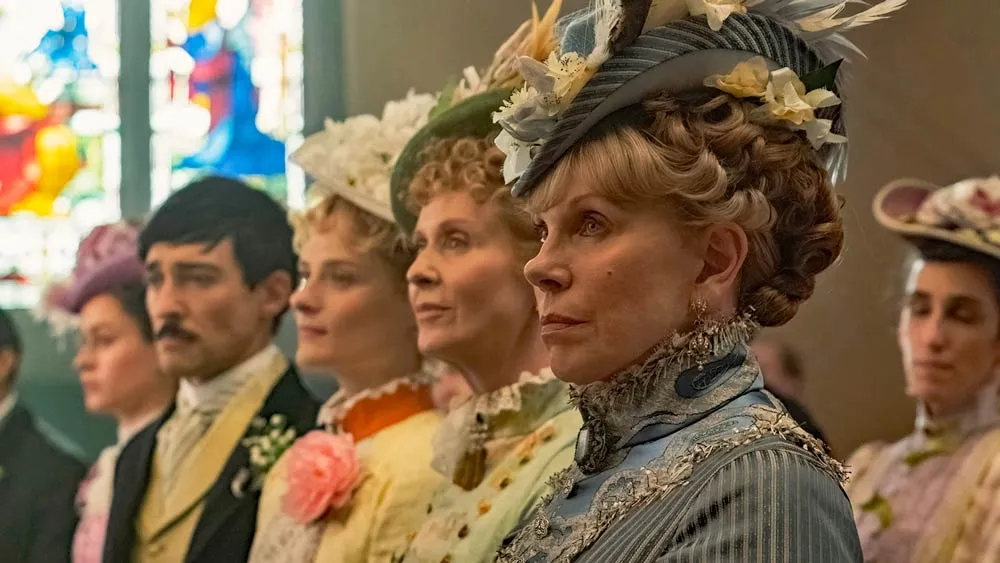September 27, 2018
Frequently Asked Questions About Muscle Building
READ TIME: 9 MIN.
When you look good, you feel good, and when you feel good, you do good! A close friend would always confidently tell me whenever he was headed to the gym. A member of the new crop of fitness and muscle building enthusiasts, he went further to buy a connected health monitoring device. For all his efforts to achieve a lean, muscular mass, he always had questions in this area frequently queried by so many.
So to help answer and debunk some queries, here is a summary of the most frequently asked questions about muscle building:
1. Is it true that women don't easily build muscles in comparison to men! Why is that if so?
Yes, scientifically it is harder for most females to build up their muscle mass than males. This is simply because of the unfavorable differences in our hormonal metabolism and structure. Building of muscles is mainly down to testosterone, which women naturally have low levels of.
As a steroid hormone, Testosterone causes muscle growth by directly stimulating protein synthesis. While women produce testosterone in their adrenal gland, it's in much smaller quantities than in men.
2. What's the difference between aerobic and anaerobic? How do they play into energy production in muscle work?
Basic energy production in muscle work is separated in two: anaerobic and aerobic. Aerobic muscle work energy is formed with oxygen, so the body uses fat storages as an energy source. While in Anaerobic muscle work, occurs without oxygen, hence majority of the energy is produced from the blood sugars and carbohydrate stored in the muscles and liver.
3. Why should I bother building muscle? Where do muscles help me?
Muscles are part of your daily body movement and help keep body balance. They also help with more immediate tasks like breathing, eating and regulating the body temperature. So muscle building generally helps your body function better and feel better.
4. Is strength-endurance that important for ideal muscle mass?
Yes, strength endurance is important when aiming to tone the body and build muscle. Technically, strength-endurance is the maintaining muscular force for an extended duration of time. Strength-endurance helps one develop strength and endurance at the same time. Strength-endurance can also be separated into anaerobic strength-endurance and aerobic muscle endurance.
So strength-endurance can't be ignored if the mission is to gain body strength, muscle size, muscle balance and weight control.
5. I keep hearing of different strengths. What types of muscular strength exist?
There several types of muscular strength, above, we already mentioned strength-endurance, which we separated into aerobic muscle endurance and anaerobic strength-endurance. We also have, Maximal strength, which is separated into hypertrophic basic strength and maximal strength. Lastly, we have speed-strength and explosive strength too.
6. Are there clear benefits in strength training for building muscle?
Strength training could be the considered the core of muscle training. With numerous benefits, it increases the size of the muscles, improves bone density and internal body performance too (muscle cell metabolism and neural enhancement).
Strength training has also been proven to improve the function of one's cardiovascular system and their blood fat levels. In summary, strength training helps trigger and enable many changes in one's body structure, performance and has beneficial effects on muscle building. Of course, the changes are dependent on consistency, intensity of the training, and method of training.
7. If I ever stop exercising, won't my muscle turn to fat?
While many people believe that their muscles just turn to fat automatically, it's not really true! Remember that muscles and fat are separate types of tissue. Lack of exercise can result in your muscles shrinking and they can shrink at the rate at which the body now burns calories. And chances are that once you stop exercising, you are likely consuming more calories than you are burning. This is what normally results in increased body fat. Reduced muscle mass also leads to reduced resting metabolism, which is normally accompanied by increased fat accumulation. So it's not a direct transformation of muscle to fat!
8. I keep hearing protein, protein, and protein! What role does protein play in muscle building?
Yes, protein is everything! Protein is made of 20 amino acids, and amino acids are basically the building blocks of muscle growth. Ironically, protein content of muscle is dependent on the net sum of protein buildup and breakdown. So ingesting protein rich food, or amino acids plays an important role in increasing the buildup of protein for muscle growth. Widely suggested, ingesting at least 20 g of protein post exercise is enough to maximally stimulate basic body muscle protein synthesis.
9. Yes, proteins and amino acids. So which are the best amino acids for muscle building?
As we cited, amino acids are the muscle growth building blocks. But to achieve the best out of amino acids, they need to be highly hydrolyzed'. Hydrolysis is where protein is chemically broken down into amino acids making the protein easier to absorb into the body. Whole proteins are typically long chains of aminos', requiring major effort from the body to break them down and use them. So hydrolyzing them down to a 70-80% range is ideal. Most companies, though hydrolyze to about 20% as it's expensive and ends up tasting bitter. But these are the best amino acids for muscle building.
10. Should I eliminate carbs from my muscle building diet? If not, are they important?
No, you cannot eliminate Carbohydrates from your diet. Carbs are the fuel for your workout as they help to replenish the muscle glycogen, which helps you recover faster and train harder. Though you primarily need low-glycemic foods as a source of carbohydrates since they can help control your blood sugar levels.
11. No one in my family is super muscular! Do genetics limit any efforts to build muscle?
Genetics is often cited as a contributing factor, but it's never really been substantiated and it's often a disproven theory by most scientists and health coaches. So contrary to popular belief, it doesn't really limit muscle building. Most of us have decent bone density and fast metabolism, which can facilitate any muscle building attempts and efforts. The human body when conditioned is a resilient organism capable of more than we give it credit for.
12. Can my eating time and habits affect muscle building, such as eating late?
Yes, it can, eating after 10pm can affect your efforts, unless you're adding some additional fruits, vegetable or amino acids. Junk food late at night is totally discouraged.
13. Can increases in lean body mass and physical training increase my testosterone levels?
Not really, there is no scientific evidence to prove that body testosterone increases after training. Widely considered the master key to increased muscular strength, testosterone is imperative to muscle building. Though some studies have tried to prove that testosterone activity increases when the body senses that its tissues need it after training. While others have theorized a decrease in testosterone levels after training programs. So it's inconclusive.
14. Can I increase muscle mass and reduce body fat simultaneously?
Well, it's not achievable for most individuals. This is because building muscle and reducing fat have mutually exclusive nutritional goals. That side for muscle gains, the priority must be to increase overall energy intake while body fat loss demands a reduction in energy intake. So you need to prioritize.
15. What are the basic training routines I can try for building muscle?
Priority should be given to strength, resistance and conditioning sessions to gain muscle. Connecting with a good strength and conditioning coach can help one develop an effective training program to achieve the right balance of trainings. But what's more paramount is perseverance, commitment, and consistency.
16. Is muscle building very stressful? Should it really be?
Yes, it can be, but should be thought of as deliberate stress'. When you create a stressful' environment for the muscles, they will automatically adapt to accommodate it. Your muscle grows to enable the body to withstand the added stress. It later becomes comfortable with the stress, this whole process is called recovery. Traditionally your body loves comfort! Remember, while stress is necessary for muscle growth, it is equally important to know what kind of and how much stress to apply!
17. Is overtraining dangerous? Can it affect me in any way?
When your body is continually stressed beyond its ability to recover, that's when you know you're overtraining. Not ideal, you risk losing some of the growth you previously experienced while setting yourself up for illness or injury. Though some symptoms can involve increased pulse and blood pressure levels. Other signs could be swelling of the lymph nodes in the neck and groin, constipation or diarrhea and loss of appetite.
18. What is anabolic and catabolic activity in muscle building?
Anabolic activity is simply defined as activity that builds muscle. Catabolic activity is an activity the body does to break muscle down. One needs to create an imbalance between muscle building and muscle breakdown activities to foster growth. One typically gains muscle mass due to the increased anabolic activity caused by muscle training.
19. Can stress affect my muscle building efforts?
Yes, it can. This is simply because muscles also grow as a result of neurological stimulation or input from the nervous system. And the nervous system is connected to your brain. So sometimes outside stress can affect neuromuscular activation, thus affecting muscular growth. So make attempts to decrease your levels of mental and physical stress with relaxation methods. Stressing also increases cortisol levels inhibiting muscle growth.
20. How important is sleep in muscle building?
It is very important since it can also affect neuromuscular activation. It's recommended that you have at least 9-10 hours of sleep a day. Not getting enough sleep will hinder our recovery process and your chances of maximum growth. Muscles tend to "grow" during rest and during sleep. In addition. A growth hormone, is highest when you sleep. Which is the hormone that spurs muscle growth.
21. What drugs and substances hinder muscle growth and mass?
Typically, one should stay away from growth hormone enhancers like arginine and L-dopa since they confuse the body's natural hormonal interaction. Also avoid any anti-catabolic substances and low-quality amino acids. Alcohol is discouraged because of its negative effects on testosterone and androgen levels. This is in addition to fake steroids.
22. What are the dangers of using fake steroids?
Steroids are known as synthetic derivatives of the hormone testosterone. Unfortunately, fake steroids have some serious side effects. Short term effects can include: bad acne, hair loss, moodiness, degenerative diseases, shrunken testicles, and enlarged nipples.
23. Why is insulin important in my efforts to build muscle?
Insulin pushes all the important amino acids into your muscle cells during recovery, so is highly crucial to muscle growth.
24. Why is cortisol not that important in muscle building? What is it?
Remember that testosterone is an anabolic hormone. Cortisol is the catabolic hormone responsible for breaking down muscle tissue. It mainly converts amino acids to carbohydrates, while preventing protein synthesis. Which isn't ideal for muscle building. Cortisol also increases insulin resistance! Consider it the evil twin brother of testosterone for muscle growth. Scientifically cortisol levels increase with age and testosterone declines with age.
25. What are the ideal diet requirements to main good testosterone levels?
For optimal testosterone levels, a diet must be balanced and consist of vitamins and minerals from vitamin B, vitamin C to zinc and manganese. Also a high-fat intake is necessary to stimulate testosterone production. Ideally the fat provides cholesterol, needed for testosterone synthesis.
26. Why is recovery considered a such a big deal in muscle building workouts?
Recuperation and recovery between workouts is without a doubt critical for muscle building success. If a muscle is not allowed to recover, growth will be impeded and over-training will occur. This can later lead to muscle breakdown and muscle mass and strength will likely decrease. And we clearly discussed the negative effects of over training above.
27. Does muscle growth happen in the gym?
No, muscle growth does not occur in the gym. Muscle growth happens during the recovery period, The time between workouts. We mentioned that this muscle must adapt to stress to compensate for future overload. So, in recovery the muscle is recuperating, growing, and getting stronger for more overload. Adapting!
28. Why do I need supplements? How helpful are they?
With numerous benefits, supplements offer the best multi-nutritional support for your muscle campaign. All you need in one place. This can help increase strength, endurance, and muscle size while decreasing fat. They are normally consumed in pre-workout conditions.
The right supplementation enables you to acquire significant nutrient amounts that will impart muscle performance though is consistency and diet is key. Mymusclepal understands that no matter the number of supplements you consume, if you're not feeding your body right then you won't have desired results.
29. I want to purchase supplements, but how do I spot if I'm being ripped off?
Building muscle is tough work and combined with fraud supplements can be frustrating. Many supplements are lab certified while others are not. To avoid fraudulent supplements, just find trustworthy and reputable dealers. Do as much due diligence and research because you won't have access to a personal lab to test the all the supplements out there.
In conclusion, achieving a very lean body composition and building muscle isn't easy, but once you get started, it's a walk in the park with the right attitude. The main goal of combining supplements, dieting and physical training is to qualitatively and quantitatively change the cellular content of the muscles. All this will help you build muscle and ideal physique.
Sponsored content.







